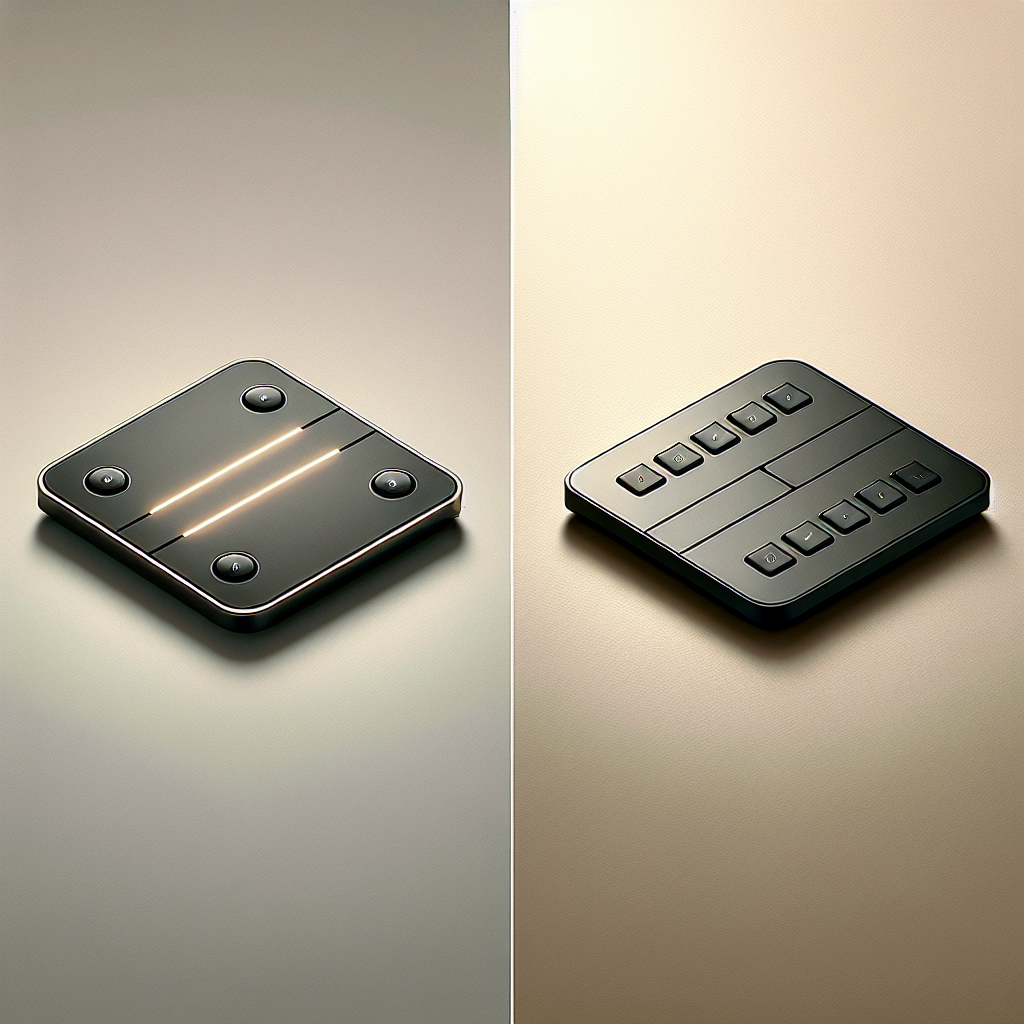
What is the difference between high-end and low-cost wireless trackpads?
Introduction
Wireless trackpads have revolutionized the way we interact with our devices, offering a sleek alternative to traditional mice. They come in various price ranges, from high-end models boasting premium features to low-cost alternatives that provide basic functionality. Understanding the differences between high-end and low-cost wireless trackpads can significantly impact your user experience and productivity. In this article, we will delve into the key distinctions between these two categories, including their features, performance, and overall user experience.
| Category | High-End Wireless Trackpads | Low-Cost Wireless Trackpads |
|---|---|---|
| Price Range | $100 – $250+ | $20 – $60 |
| Build Quality | Premium materials, sturdy | Basic plastic, less durable |
| Precision | High sensitivity, accuracy | Lower sensitivity, basic tracking |
| Customization | Multiple programmable buttons | Limited or no customization |
| Battery Life | Long-lasting, rechargeable | Shorter life, often disposable |
| Connectivity | Bluetooth & USB-C | Bluetooth or 2.4GHz |
1. Build Quality
High-end wireless trackpads are typically made from premium materials such as aluminum or high-grade plastics. This results in a sturdy and aesthetically pleasing design. In contrast, low-cost trackpads often utilize cheaper plastics, which can lead to a less durable product that may not withstand prolonged use.
Advantages of High-End Build Quality
- Durability: High-end models are designed to last, reducing the frequency of replacements.
- Aesthetic Appeal: Sleek designs can enhance the overall look of your workspace.
- Comfort: Higher quality materials often provide better ergonomics.
2. Performance and Precision
Performance is a crucial factor when choosing a wireless trackpad. High-end models offer a superior level of precision and sensitivity, which is essential for tasks like graphic design or gaming. Low-cost versions may struggle with precision, leading to a frustrating user experience.
Performance Features of High-End Trackpads
- High DPI Settings: Allow for more responsive tracking.
- Multi-Touch Gestures: Support for advanced gestures for productivity.
- Low Latency: Ensures immediate response to user inputs, essential for gaming.
3. Customization
One of the significant benefits of high-end wireless trackpads is the ability to customize various features. Users can program buttons to perform specific tasks or create custom gestures, enhancing productivity. Low-cost models often have limited or no customization options.
Customization Options in High-End Models
- Programmable Buttons: Assign specific commands to buttons based on user preference.
- Gesture Control: Customize gestures for quick access to applications or commands.
- Software Support: High-end models usually come with proprietary software for advanced configuration.
4. Battery Life
Battery life is another critical aspect where high-end wireless trackpads typically excel. Many of these models feature rechargeable batteries that can last weeks to months on a single charge, depending on usage. In contrast, low-cost trackpads may rely on disposable batteries, which can be inconvenient and more costly in the long run.
Battery Life Comparison
- High-End: Rechargeable, 3-6 months battery life.
- Low-Cost: Disposable batteries, lasting 1-2 months typically.
5. Connectivity
High-end wireless trackpads often offer more versatile connectivity options, including Bluetooth and USB-C connections, ensuring compatibility with a wide range of devices. Low-cost alternatives might restrict users to basic Bluetooth connections or older USB options, potentially limiting their use with modern devices.
Connectivity Features
- High-End: Support for dual connectivity (Bluetooth & wired).
- Low-Cost: Primarily Bluetooth, may lack latest standards.
6. User Experience
The overall user experience can greatly differ between high-end and low-cost wireless trackpads. High-end models are designed for a seamless experience with responsive touch sensitivity and fewer interruptions. Users of low-cost options may experience issues such as erratic tracking or unresponsive gestures.
Key User Experience Factors
- Responsiveness: High-end trackpads respond quickly to touch input.
- Comfort: Ergonomically designed for prolonged use.
- Software Experience: High-end models may provide continual updates and improvements.
Conclusion
When choosing between high-end and low-cost wireless trackpads, it’s essential to understand the significant differences in features and performance. While high-end models may require a more substantial investment, they often pay off in terms of durability, precision, and user experience. If you are looking for reliable performance and a product that can enhance your productivity, high-end wireless trackpads are worth considering. On the other hand, if you are on a tight budget and require just basic functionality, low-cost wireless trackpads can still serve as a suitable option.
Final Recommendations
Before making a purchase, consider your primary usage, budget, and preferred features. Conduct thorough research and read reviews to select the wireless trackpad that best meets your needs, ensuring the choice aligns with your workflow and enhances your overall productivity.
